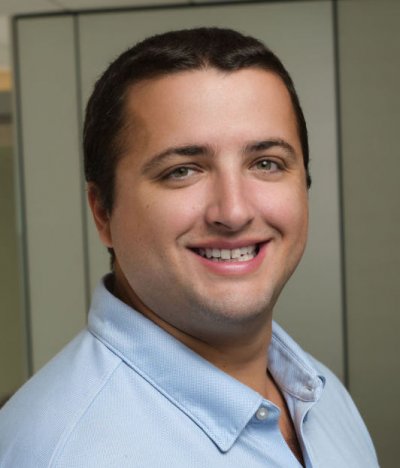The smell of the Harvard Medical School archives is similar to many libraries and bookstores that have copious amounts of old paper. Still, there is something comforting to me about the specific odor of the HMS archives. I first set foot in the archives at the Countway Center for the History of Medicine during my first year as a research fellow in neurology. I had recently gone through a whirlwind 6-months of experiments that involved long, arduous days, and more than one session of questioning of my chosen career path. These experiments ultimately failed. I was broken, unsure of how to proceed and even more unsure if I could stymy the creeping depression attempting to insert itself into my conscience. Something had to give. I began listlessly perusing PubMed and going to any seminar around Longwood that I could find, searching, hunting, begging even, for a sliver of inspiration. I was walking into a lecture hall for a seminar on a topic of little interest to myself when looking up, I noticed the room was named after Walter Cannon, a renowned physiologist known for everything from his early work using X-rays to elegant physiological experiments that unraveled the nature of the sympathetic and para-sympathetic nervous systems. I proceeded to ignore most of the seminar and instead thought through what I knew about Cannon and began wondering if the HMS archives had retained any of his original manuscripts.
The following afternoon I sat with my laptop in one of the orange, alien looking, chairs that adorn the café at Countway Library. Thankfully the database of the medical archives contents are fairly well organized online. I searched Cannon’s name on the site and was greeted by thousands of hits! How on earth could this be? He didn’t publish nearly that many articles in his life… As I scrolled, I began to realize that these were not his research papers but instead his personal and professional correspondences during his time at HMS. Feeling the sensation of an intellectual pursuit for the first time in weeks, I decided to go to the archives and see if I could peruse the Cannon papers on such short notice. The staff was surprised to see me but were welcoming and informed me that the Cannon papers were indeed kept on site. I had lucked out. Beginning on a random box from the 1940s I read interesting letters from Cannon to the HMS Dean, Sidney Burwell, but nothing extraordinary caught my eye. As I had shown up shortly before closing time, I thanked the staff after finishing that first folder and went on my way.
At home that night, sitting at my desk looking out over the rain-covered buildings of Boston, I came across one Dr. Arturo Rosenblueth with hundreds of correspondences in the Cannon papers. I am a Chicano (Mexican American) and in seeing someone with the first name of Arturo and the last name Rosenblueth I was intrigued, as this is not dissimilar from my own Mexican meets German and American heritage. I put Rosenblueth’s name into my search engine and found a brief wiki page about a Mexican physician who had worked at HMS with Walter Cannon and collaborated with Norbert Wiener on cybernetics, but not much beyond that. I rapidly emailed the Countway archival staff asking for an appointment later that week to view all the Cannon papers that contained letters from Rosenblueth. They obliged and I was booked for a slot two days later.
The findings of my reading of the Cannon papers were unexpected and important scientific history. The complete story is currently under review for publication, so I will not bore the reader with a full retelling. In brief, Rosenblueth won a Guggenheim Fellowship to move to Boston and work with Cannon on neurophysiology. He ended up staying at HMS after his fellowship expired eventually becoming an Assistant Professor. In total, Rosenblueth and Cannon collaborated for 15 years, co-authoring over 20 papers and one book, and independently, Rosenblueth authored more than 60 manuscripts in his time at Harvard. While this seems like a feel-good story that ends with Rosenblueth returning to Mexico to found a new institute of Physiology, the Cannon papers tell a different tale. Cannon was scheduled to retire in 1942. Despite informing numerous superiors of his feeling that Rosenblueth was the best possible replacement for his position as Chair of the department, not only was Rosenblueth not announced as Chair, he was not given a full professorship and subsequently asked to take leave prior to his quitting and returning to Mexico. The reasons for this sudden and rapid shift in feeling is opaque and only partially ascribable in the Cannon papers. The principal culprits appear to be budget, mid-WWII driven xenophobia, and ultimately the HMS and department leadership after Cannon’s retirement.
While Rosenblueth’s is not a story with a fairytale ending, his history deserves to be told, and the reasons for a shining star in the department not being retained must be told as best they can with the facts at hand. I hope you will read my article on this topic once it is published, but more importantly I ask that you take a moment the next time you are browsing work by a famous scientist of the past and do a bit of digging into who else was instrumental to that work. You may find a buried seed like Rosenblueth that sprouted into an important figure in scientific history.
Dr. Luke Schwerdtfeger received his PhD in Biomedical Sciences with a concentration on intestinal physiology and enteric neural epithelial signaling pathways. He is currently a Research Fellow in Neurology at Brigham and Women’s Hospital and Harvard Medical School studying the role of the gut microbiome and it’s impact on peripheral immunology in multiple sclerosis. LinkedIn is: www.linkedin.com/in/lukeschwerdtfeger
